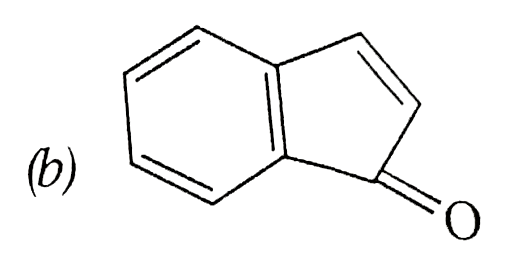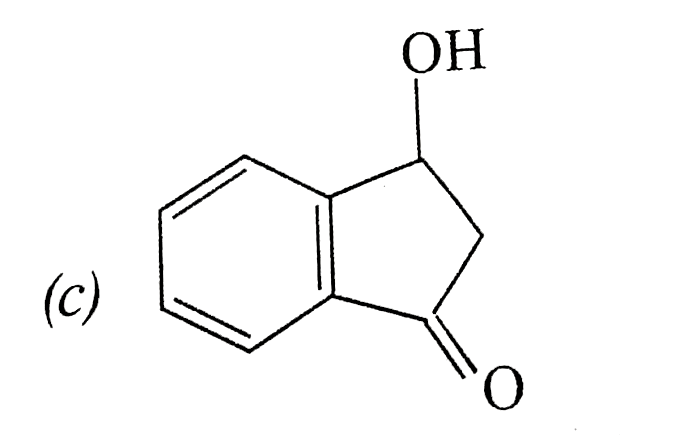An organic compound (A) C8H4O3 in dry benzene in the presence of anhydrous AlCl3 gives compound (B), the compound (B) on treatment with PCl5 followed by reaction with H2/Pd(BaSO4) gives compound ( C ) which on reaction with hdyrazine gives a cyclized compound (D) C14H10N2. Identify (A), (B), ( C ), and (D). Explain the formation of (D) from ( C ).
Topper's Solved these Questions
- ALDEHYDES AND KETONES BOOK - FIITJEECHAPTER - ALDEHYDES AND KETONES EXERCISE - SOLVED PROBLEMS (OBJECTIVE)
17 Videos
- ALDEHYDES AND KETONES BOOK - FIITJEECHAPTER - ALDEHYDES AND KETONES EXERCISE - SOLVED PROBLEMS (OBJECTIVE) COMPREHENSION
3 Videos
- ALDEHYDES AND KETONES BOOK - FIITJEECHAPTER - ALDEHYDES AND KETONES EXERCISE - MATCHING LIST QUESTIONS
2 Videos
- ALCOHOLS, ETHERS AND PHENOLS BOOK - FIITJEECHAPTER - ALCOHOLS, ETHERS AND PHENOLS EXERCISE - SINGLE INTEGER ANSWER TYPE QUESTIONS
7 Videos
- ALKYL AND ARYL HALIDESBOOK - FIITJEECHAPTER - ALKYL AND ARYL HALIDESEXERCISE - NUMERICAL BASED QUESTIONS
1 Videos
Similar Questions
An organic compound (A),C8H4O3 in dry benzene in the presence of anhydrous AlCl3 gives ,compound (B). The compound (B) on treatement with PCl5 followed by reaction with H2/Pd−BaSO4 gives compound C, which on reaction with hydrazine gives a cyclised compound (D) of formula C14H10N2. Identify (A),(B),(C ) and (D). Explain the formation of (D) and (C ).
View SolutionAn organic compound (A),C8H4O3 in dry benzene in the presene of anhydorus AlCl3 gives compound (B). Compound (B) on treatment with PCl5 followed by reaction with H2/Pd(BaSO4) gives compound (C) which on reaction with hydrazine gives a cyclised compound (D),(C14H10N2) Idenyify (A),(B),(C) and (D). Explain the formation of (D) from (C).
View Solution
Knowledge Check
Treatment of benzene with C∅HCl in the presence of anhydrous AlCl3/CuCl followed by reaction with Ac2∅NaOAc gives a compound X. Reaction of X with H2/Pd/c followed by treatment with H3PO4 gives another compound Y. The compound Y is :
A B
B C
C D
D
An organic compound (A),C8H4O3 in dry benzene in the presene of anhydorus AlCl3 gives compound (B). Compound (B) on treatment with PCl5 followed by reaction with H2/Pd(BaSO4) gives compound (C) which on reaction with hydrazine gives a cyclised compound (D),(C14H10N2) Idenyify (A),(B),(C) and (D). Explain the formation of (D) from (C).
View SolutionAn organic compound (A) C8H4O3 , in dry bebzene in the presence of anhydrous AlCl3 gives compound (B ). The compound (B) on treatment with PCl5 followed by reaction with H2/Pd(BaSo4) gives compound (C ) which on reaction with hydrazine gives a cyclide compound (D) (C14H10N2). Identify (A), (B) (C ), and (D) Explain the formation of (D ) from (C ).
View SolutionAn organic compound A ,C4H4O3 in dry benzene in the presence of anhydrous AlCl3 gives compound B. the compound B on treatment with PCl5, followed by reaction with H2/Pd(BaSO4) gives compound C, which one reaction with hydrazine gives a cyclised compound D (C10H10N2) . identify A,B,C and D. Explain the formation of D from c.
View SolutionAn organic compound C8H10 (A) on treatment with alkaline KMnO4 gives a compound C6H6O4. (B) which on strong heating gives C6H4O3 (C). The compound (D) in dry benzene in presen of AlCl3 gives compound (E). The compound (E) on treatment with PCl5 followed by reaction with H2/Pd,BaSO4 gives compound (F). Identify (A) to (F).
View SolutionBenzene on reaction with HOCl in presence of an acid produces organic compound (A). (A) on treatment with NaNH2/liq. NH3 furnishes another organic compound (B). (B) on treatment with HBF4 affords an organic compound (C) which on heating with NaNO2 gives organic compound (D). Identify (A), (B), (C) and (D).
View SolutionTreatment of benzene with CO/HCl in the presence of anhydrous AlCl3/CuCl followed by reaction with Ac2O/NaOAc gives a compound X. Reaction of X with H2/Pd/c followed by treatment with H3PO4 gives another compound Y. The compound Y is :
View SolutionAn organic compound (A) (C6H10O) on reaction with CH3MgBr followed by acid treatment gives compound (B). The compound (B) on ozonolysis gives compound (C ), which in the presence of a base gives 1-acetyl cyclopentane (D). The compound (B) on reaction with HBr gives compound (E ). Write the structures of (A), (B), (C ), (D), and (E ). Show how (D) is formed from (C ).
View Solution

